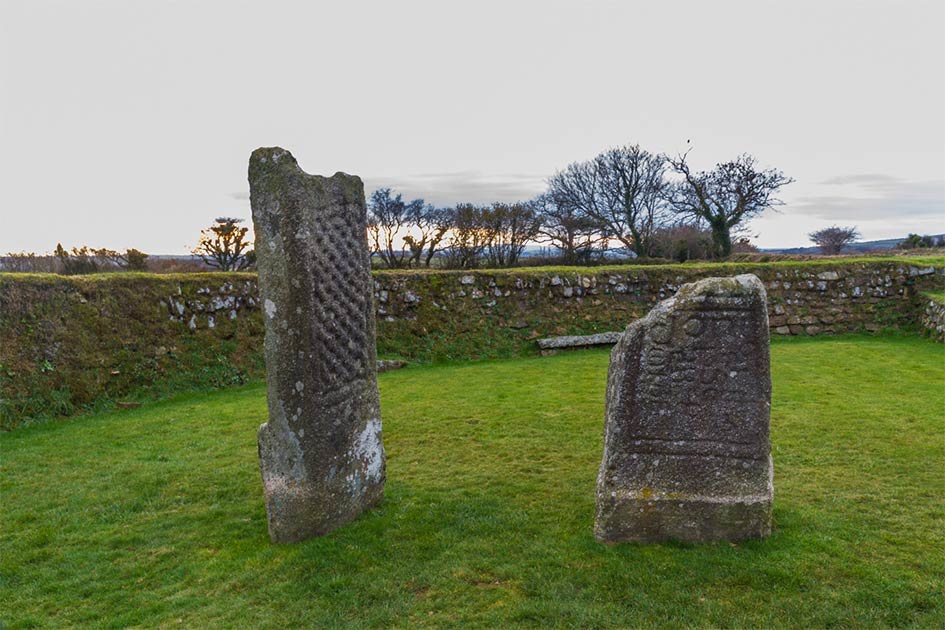King Doniert’s Stone, Memorial of a Lost Kingdom
While Britain is a land with many world-famous historical landmarks and sites, there are numerous smaller and little-known monuments that are remarkable in their own way. King Doniert’s Stone is a cross that marks the death of a once powerful ruler of a long-lost kingdom. This stone and the one next to it are the only surviving examples of 9th-century stone crosses in Cornwall.
The History of King Doniert’s Stone
In the aftermath of the fall of the Roman Empire, the British Isles were divided between warring Celtic, Brythonic and Anglo-Saxon kingdoms. In the historic region of Cornwall, lay the Brythonic kingdom of Dumnonia, a kingdom made up of Roman-Britons who were able to hold out in the south-west.
The state had strong ties with Ireland and especially Brittany, in what is now France. Many believe that people from Dumnonia settled in Brittany and gave it its unique Celtic culture and language which it still retains to this day.
There were a number of kings of Dumnonia, or Cornwall as later writers have described it, and King Doniert’s Stone is the remnant of a Celtic High Cross. Doniert’s name was deciphered by antiquarians and this has led historians to believe that it was a monument to the last Cornish king. Its design was probably introduced by Irish or Welsh monks, who Christianized the south-west of England.
- Researchers Unearth 6th Century Palace from the Legendary Birthplace of King Arthur
- More than a Dozen Mysterious Prehistoric Tunnels in Cornwall, England, Mystify Researchers
- Irish and Celtic Symbols: The True Meanings Behind Signs of Pride and Power

Map of England c 600 AD with Dumnonia in the south west (Image by Hel-hama)
The kingdom of Dumnonia was a dominant maritime power but became a client kingdom and was aligned with the Anglo-Saxons by the 9 th century AD. King Donyarth (or Doniert in Latin), was the last independent ruler of Cornwall. He drowned in the River Fowey, near the site of the stone, and while most sources believe that he died accidentally, some Irish chronicles state that the ruler was deliberately drowned by the Anglo-Saxons because he was collaborating with the Viking’s who were causing havoc in the Kingdom of Wessex. Some believe that he died after Alfred the Great’s victory in 875 AD.
In the 19 th century, the site was excavated and local miners who worked on the project unearthed a large chamber under the stone. At present, the site and the stone are managed by English Heritage.
The Rich Carvings of King Doniert’s Stone
The granite bases of two 9 th or 10 th century distinctive Celtic style crosses remain. The northern cross is the one referred to as Doniert’s Stone because of an inscription that refers to the dead Cornish king in a script known as insular. This medieval script system, invented in Ireland, spread to Anglo-Saxon England under the influence of Irish Christianity. The fragment is about 4 foot 6 inches (1.37 m) high and is decorated on three sides. The panels contain intricate interlaced Celtic designs. King Doniert’s Stone still stands upon its original plinth.
The chamber beneath this cross is quite large, but the original use of this space and why it was constructed remains a mystery. Some have speculated that it may originally have been a mine shaft as Cornwall was famous for its many tin mines. It has also, however, been theorized that the underground chamber could be an oratory, where Christian services were held.

John Norden’s depiction of the stones in 1650 (English Heritage)
Near King Doniert’s Stone is another fragment of a cross known the ‘half stone’. Sadly, the top of this cross broke off and is now lost. This stone stands almost 7 feet high on its plinth. The interlaced decorations are different in design to King Doniert’s Stone. The history of this stone and its relationship to the memorial for the drowned king is unknown.
How to visit the Stone of King Doniert in Cornwall, England
The site is located in a field near the picturesque village of St Cleer in Cornwall. It is almost fully enclosed by a stone wall. Public transport to St Cleer is available and the stone is well-signposted. No fee is charged to enter, but no tours are available.
Top image: King Doniert’s Stone Source: Andy Chisholm / Adobe Stock
By Ed Whelan
References
Deacon, B. (2010). Cornwall and the Cornish. Alison Hodge Publishers
Lockyer, N. (1907). Notes on Ancient British Monuments
Available at: https://www.nature.com/articles/077056a0




















Comments
Cornwall is full of historic wonders, many unknown even to the local inhabitants. Sadly noone appears to wish to study Cornwall as the only books detailing its wonders are relics in their own rights. And since the last historian to have published serious books concerning Cornwall, Craig Weatherhill, has recently died, the likelihood of any attention being brought to the important historical artifacts of Cornwall are appearing to look very slim. Its a shame the place is neglected on all fronts as so much could be learnt. Even the relationship Cornwall had with Dumnonia isn’t quite as simple as made out.
In Anglia et Cornubia.